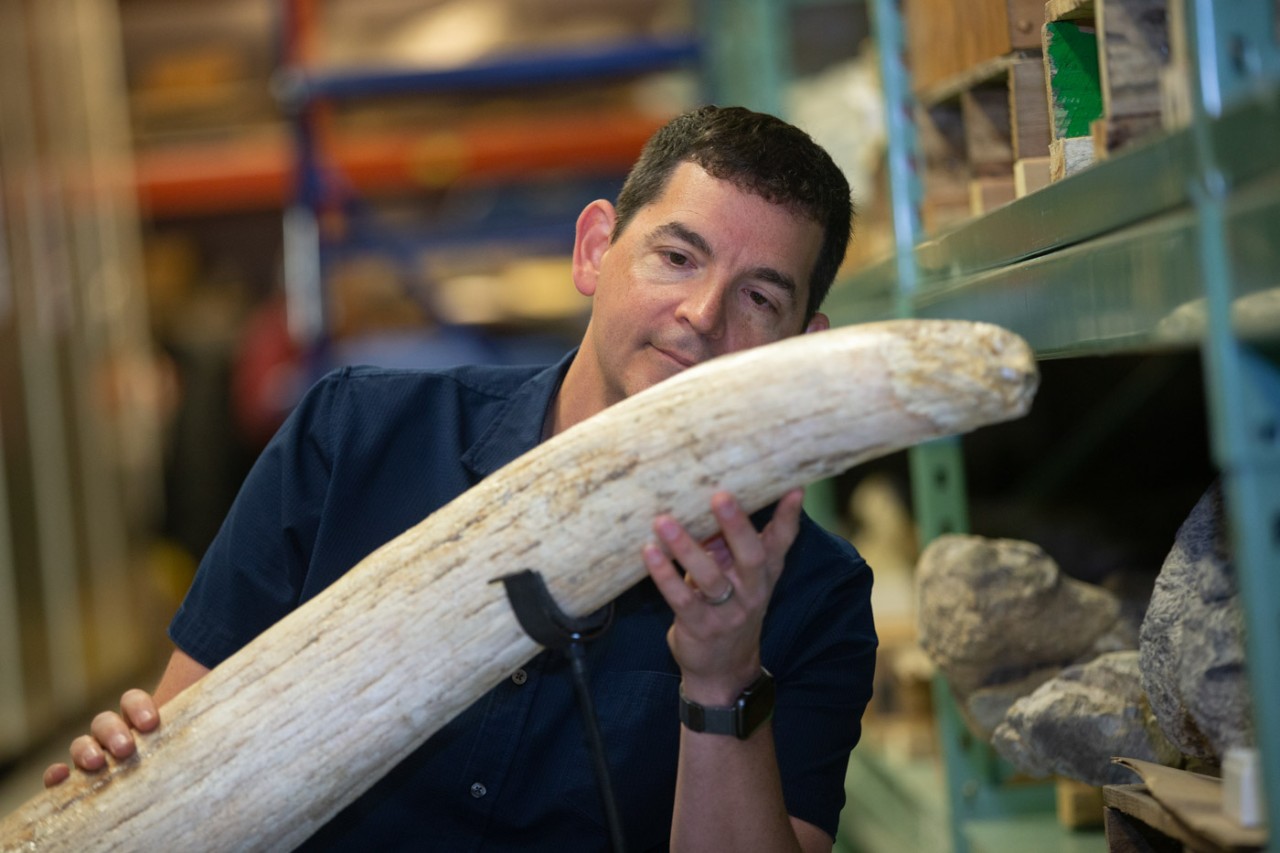
The New York Times: Woolly mammoth left diary in her tusk
UC professor explains how we are learning more about Ice Age behemoths
The New York Times talked to a geosciences professor about what we can learn about mammoths from their tusks.
UC College of Arts and Sciences paleoecologist Joshua Miller studies animals such as caribou and extinct mammoths and mastodons to learn more about environmental changes over time. For example, he and his research partners in 2022 revealed the epic annual migration of male mastodons that roamed hundreds of miles each year across what is now Indiana.
The Times reported on a new study by the University of Alaska that examined the life of a mammoth nicknamed Elma. From her tusks, which grow throughout the mammoth's lifetime, researchers can use isotopic analysis to follow her movements across the landscape.
They learned that she was born in what is now the Canadian Yukon but moved hundreds of miles west into central Alaska where she likely was killed by people. Her remains were recovered in an ancient hunting and fishing camp.
Miller was not part of the study but has conducted similar research on ancient mammoth and mastodon remains in his lab at UC. Miller said as we learn more about the lives of individual animals, we can recreate the fascinating life history of the species.
“There are answers out there,” Miller told the Times. “We’re just starting to build it. And that’s exciting.”
Read the New York Times story.
Featured image at top: UC Assistant Professor Joshua Miller examines a mastodon tusk at the Cincinnati Museum Center's Geier Collections and Research Center. Photo/Andrew Higley/UC Marketing + Brand

UC Assistant Professor Joshua Miller poses with a bronze mammoth outside the Cincinnati Museum Center's Geier Collections and Research Center. Photo/Andrew Higley/UC Marketing + Brand
Related Stories
Ohio looks to fast-track wastewater discharge permits
December 16, 2025
Bradford Mank, James B. Helmer Jr. Professor of Law at the University of Cincinnati, spoke with WVXU for a story about a proposal by the Ohio Environmental Protection Agency to streamline the way wastewater discharge permits are issued to data centers.
Tariff troubles for online shoppers
December 16, 2025
This year’s new regulations on tariffs and customs are leaving holiday shoppers with unexpected fees on some of their purchases, according to recent reporting by WLWT. Associate Dean of Impact and Partnerships for the University of Cincinnati’s Lindner College of Business Charles Sox spoke to WLWT about why shoppers are only just now feeling the impact, despite these policies being in effect for months.
Limited IT support offered during winter season days
December 16, 2025
The IT Service Desk, powered by Digital Technology Solutions (DTS), will be closed from Wednesday, Dec. 24, through Thursday, Jan. 1, during the university’s Winter Season Days closure. The Service Desk will resume normal operations Friday, Jan. 2.
